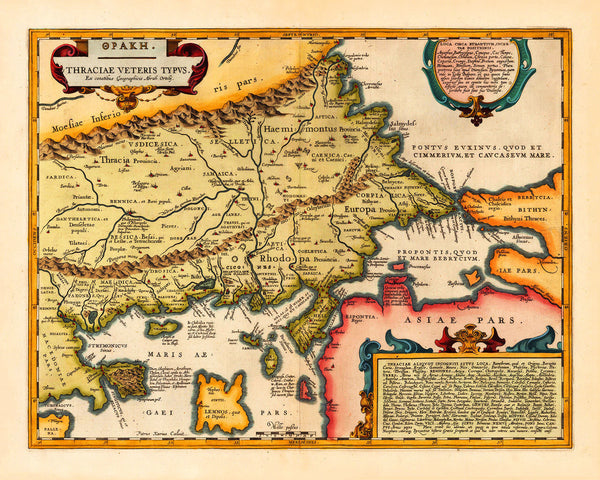Thrace — the Land of Orpheus and Spartacus
To the modern-day reader, Thrace is mostly known as the homeland of Spartacus — the Roman gladiator who turned leader of the biggest slave uprising in the ancient world. Thrace, and specifically its central part, the Rhodope Mountains, was also known as the birthplace of Orpheus — the greatest of all musicians and poets in Greek Mythology. Yet, even today, very little is known about the Thracians. To the Ancient Greeks, their neighbors to the North were a sophisticated culture with unsurpassed knowledge of goldsmithing. Homer describes in the Iliad the Thracian King Rhesus: “His horses are the finest and strongest that I have ever seen, they are whiter than snow and fleeter than any wind that blows. His chariot is equipped with silver and gold, and he has brought his marvelous golden armor, of the rarest workmanship — too splendid for any mortal man to carry, and meet only for the gods…” (The Iliad: Book X). In the Hellenistic tradition, “Thrace” (Θρᾴκη) was referred to as the lands north of Macedonia up to the Danube, and east of Illyria to the Euxeinos Pontos (the Black Sea). That area largely covered the Odrysian Kingdom, a Thracian confederation of 40 tribes and 22 kingdoms, which existed from 460 BC to 46 AD. But how old is really the Thracian civilization? Numerous archaeological discoveries on the territory of present-day Bulgaria point at advanced cultures with sophisticated knowledge and social structures, going back over 8,000 years. That predates both Greek and Egyptian civilizations by 1,500–2,000 years. Excavations near Varna, Bulgaria, uncovered remains of a 6,500-year-old fortified stone-walled city, the oldest of its kind found in Europe. Nearby, another significant discovery was made — the site of the Varna Necropolis, containing a 7,000-year-old gold treasure of over 3,000 objects, that is now known as “the Oldest Gold in the World”.
• Antique map of Ancient Thrace, 1595, A. Ortelius, (1649, J. Janssonius), after G. Gastaldi
• Title: ΘΡΑΚΗ. Thraciæ Veteris Typvs [Thraciae Veteris Typus] (Map of Ancient Thrace)
• Cartouche I: Loca Circa Byzantium Incertae Positionis (Uncertain Places Around Byzantium)
• Cartouche II: Thraciae Aliquot Incogniti Situs Loca (Several Unknown Locations in Thrace)
• Fine Art Premium Giclée (Gouttelette) Print (100% cotton 340 gsm fine art paper)
• Made in USA


